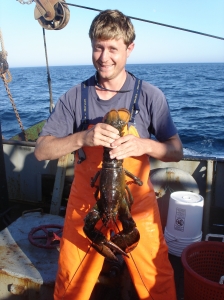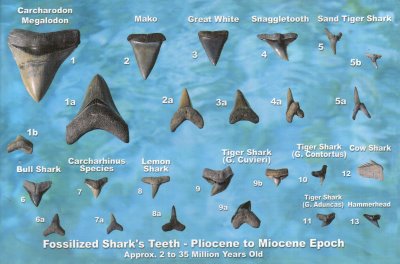 Time for another giveaway … Would you believe me if I told you there was a smallish kitchen appliance you could use daily to enjoy a refreshing beverage that would reduce the amount of plastic bottles that would potentially enter the atmosphere as marine debris and it was free? While you’re contemplating how this miracle could ever occur, here are some facts on plastic bottles and the impact they have on the environment.
Time for another giveaway … Would you believe me if I told you there was a smallish kitchen appliance you could use daily to enjoy a refreshing beverage that would reduce the amount of plastic bottles that would potentially enter the atmosphere as marine debris and it was free? While you’re contemplating how this miracle could ever occur, here are some facts on plastic bottles and the impact they have on the environment.
- Plastic bottles can take over 1,000 years to decompose.
- Enough plastic bottles are thrown away each year in the United States to circle the earth four times.
- Over 80% of empty water bottles end up in the nation’s landfills.
- Only 8% of the total plastic waste generated in 2010 was recovered for recycling.
- 1.5 million tons of plastic waste are created by plastic bottles alone.
- 47 million gallons of oil is consumed to produce the bottles that Americans drink out of each year (This is enough oil to take 100,000 cars off the road and 1-billion pounds of carbon dioxide out of the atmosphere).
- 24 million gallons of oil are needed to produce a billion plastic bottles.
- Bottled water costs about 1000 times more than tap water and 90% of the cost of bottled water is due to the bottle itself.
- Bottling and shipping water is the least energy efficient method ever used to supply water.
- In a study conducted by the National Resources Defense Council one third of bottled water tested contained significant contamination.
 Now, how can you reduce the amount of plastic bottles you may potentially contribute to the environment? My suggestion isn’t going to be too surprising if you’ve been following me on Twitter as I’ve become a genuine fan of the SodaStream machine. The SodaStream isn’t a new product by any means. In fact, this home soda maker machine is connected with 1970/1980’s childhood nostalgia in the United Kingdom. The soda maker machine comes with a few durable bottles that you keep filled up in the refrigerator and use the carbonator to turn the cold tap water into delicious bubbly water. There are about 30 flavors to add to the bubbly water to create your own fun drinks (Target carries the flavors to add)! My husband likens the cola flavor to Coke rather than Pepsi. I thoroughly enjoy the plain club soda, but have indulged in the occasional diet Dr. flavor and cannot tell any difference from the Pipp or Pepper original. There are even Crystal Light and energy drink options. I’ve come to appreciate it, not only because it reduces marine debris, but also because there is no dragging bottles from the store to the house and the recycling bin doesn’t need to be emptied as much which I know is also making an impact on the environment.
Now, how can you reduce the amount of plastic bottles you may potentially contribute to the environment? My suggestion isn’t going to be too surprising if you’ve been following me on Twitter as I’ve become a genuine fan of the SodaStream machine. The SodaStream isn’t a new product by any means. In fact, this home soda maker machine is connected with 1970/1980’s childhood nostalgia in the United Kingdom. The soda maker machine comes with a few durable bottles that you keep filled up in the refrigerator and use the carbonator to turn the cold tap water into delicious bubbly water. There are about 30 flavors to add to the bubbly water to create your own fun drinks (Target carries the flavors to add)! My husband likens the cola flavor to Coke rather than Pepsi. I thoroughly enjoy the plain club soda, but have indulged in the occasional diet Dr. flavor and cannot tell any difference from the Pipp or Pepper original. There are even Crystal Light and energy drink options. I’ve come to appreciate it, not only because it reduces marine debris, but also because there is no dragging bottles from the store to the house and the recycling bin doesn’t need to be emptied as much which I know is also making an impact on the environment.
Of course, the SodaStream carbonator does need to be replaced and that comes with a cost (but, I think it’s worth it!). The carbonator needs to be replaced depending on how often you use it. We’ve had ours for 3 months and will probably make it another 3 before we need to replace it. The carbonators can be exchanged for free to any participating local retailer or through the SodaStream company directly via UPS (yes, you’re essentially hostage to a single overpriced gas supplier).
How can you get your hands on a SodaStream for free? If you share any of my posts on Facebook or retweet any of my posts on Twitter in the next week I’ll enter you into a raffle for a free SodaStream (they were kind of enough to send me one)! You can share as many posts or retweet as many tweets as you’d prefer to saturate your friends, family, and colleagues until noon next Friday. Each time you share or retweet it will be an additional chance to win. I’ll only count the shares from the direct page or the retweets from the original tweet and not the folks that share a share or retweet a retweet. Also, it can be any post or tweet, new or old. Be sure to tag Beach Chair Scientist in anything you share! I will announce the winner next Friday (what a great way to start Labor Day weekend for someone!).
Update (8/31/2012): Thanks to Random Picker for helping make the raffle so efficient! Our winner for the SodaStream is a Beach Chair Scientist Facebook friend! Thank you to everyone that participated your support means the world!










:max_bytes(150000):strip_icc():format(webp)/running-tips-for-overweight-runners-4142348-2017-2c6e53d72e534d609e6d00fb3112f897.jpg)







What people are saying …